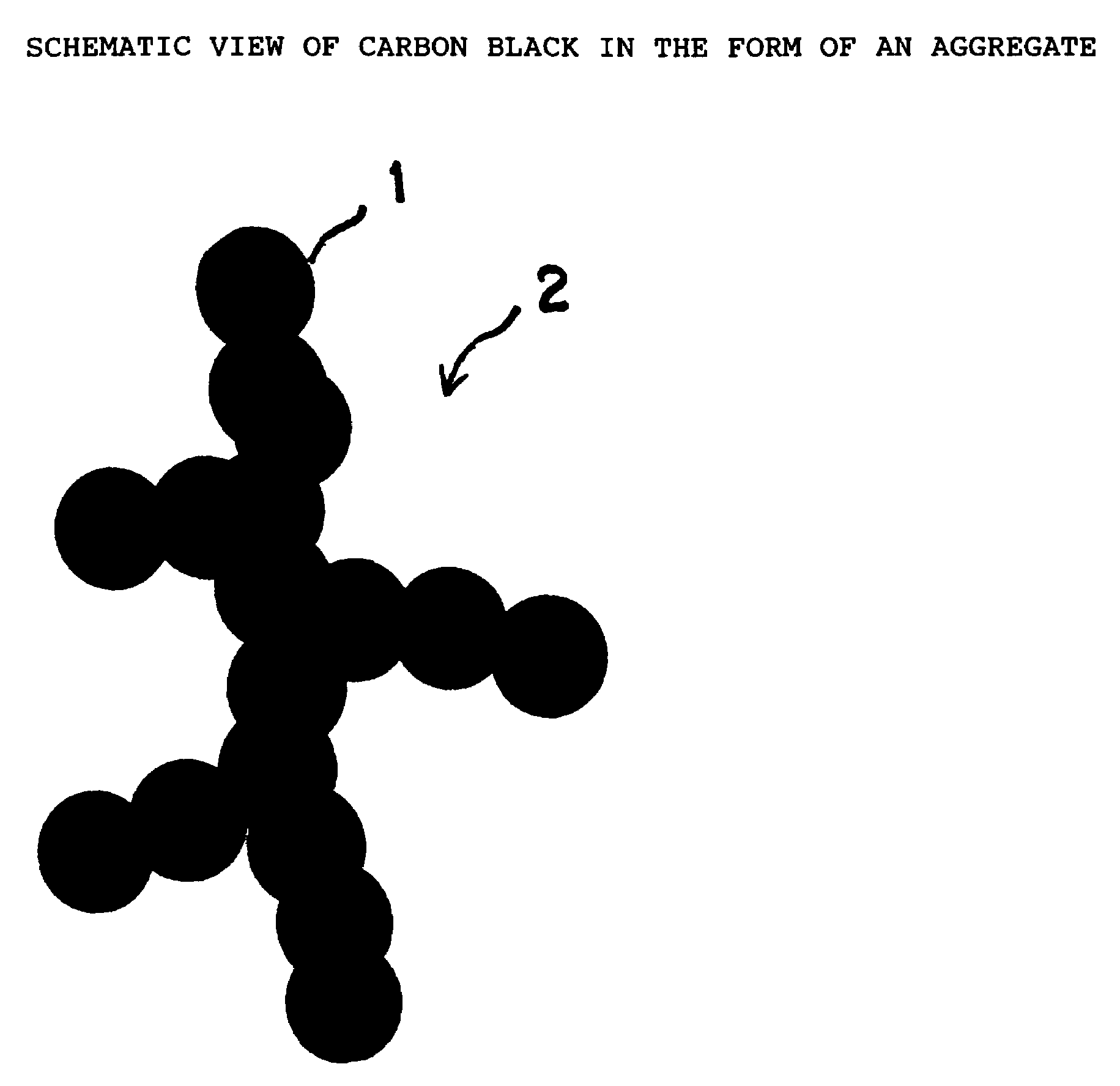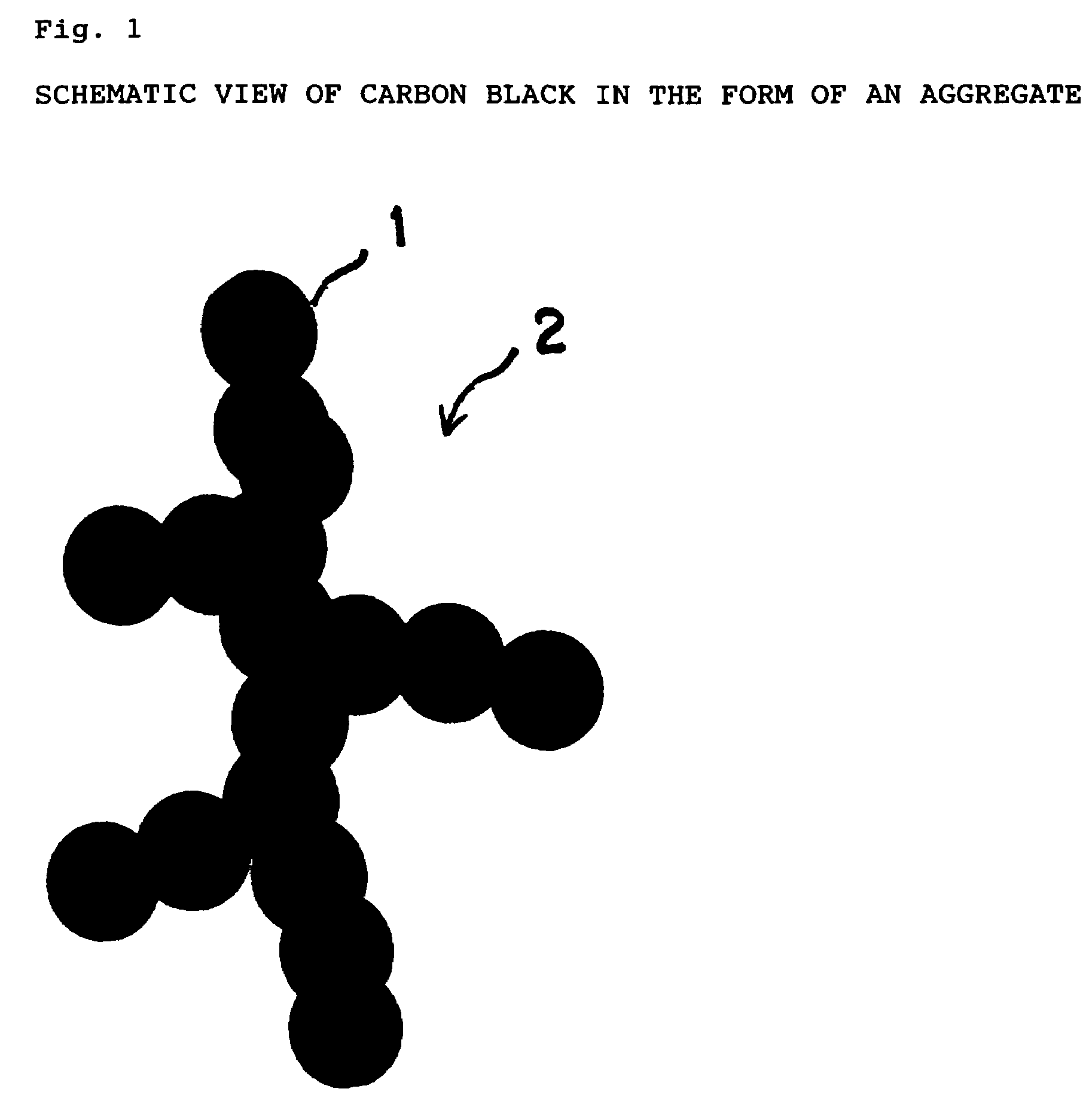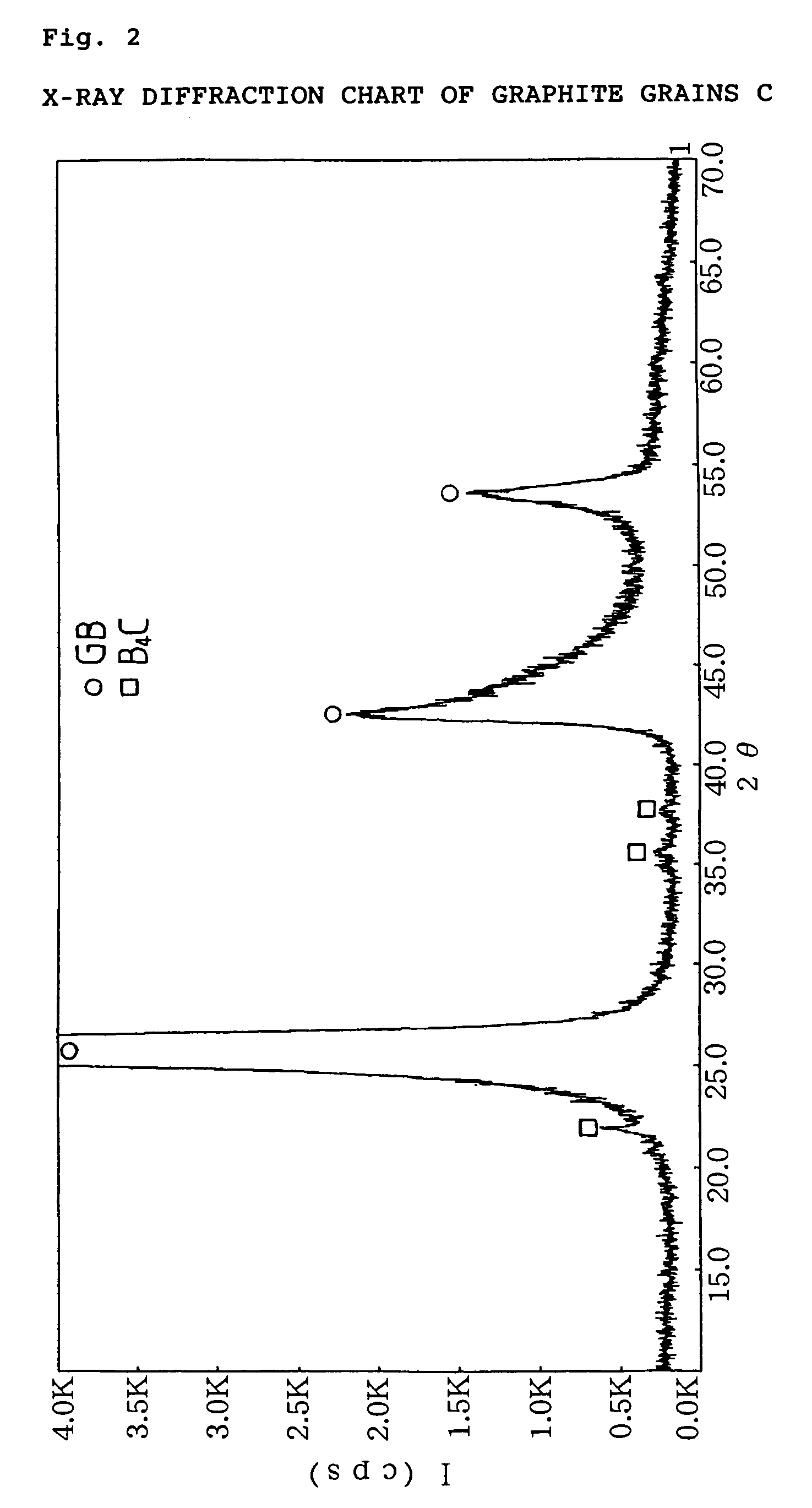Refractory raw materials, method for production thereof and refractory using the material
a technology refractory, which is applied in the field of refractory raw materials, can solve the problems of insufficient corrosion resistance and oxidation resistance, and achieve the effects of excellent corrosion resistance, oxidation resistance and thermal shock resistan
- Summary
- Abstract
- Description
- Claims
- Application Information
AI Technical Summary
Benefits of technology
Problems solved by technology
Method used
Image
Examples
synthesis example 1
Synthesis of Graphite Grains A (Carbonaceous Grains b)
[0110]“Niteron #10 Kai” made by Nippon Steel Chemical Carbon Co., Ltd. was used as a carbon black raw material. This carbon black is carbon black of the type called first extruding furnace black (FEF) in which the average primary grain size is 41 nm, the DBP absorption (x) is 126 ml / 100 g and the DBP absorption (y) of the compressed sample is 89 ml / 100 g, and it is carbonaceous grains a used in this Example. This carbon black was graphitized by heat treatment in a carbon furnace (FVS-200 / 200 / 200, FRET-50, manufactured by Fuji Electronics Industry Co., Ltd. ) in an argon gas atmosphere at 2,100° C. for 3 hours to obtain graphite grains A (carbonaceous grains b). When the resulting grains were subjected to the X-ray diffraction measurement, a peak ascribable to a graphite structure was observed, and it was found that graphite grains were formed. Lattice spacing calculated from a diffraction line corresponding to 002 spacing of grap...
synthesis example 2
Synthesis of Graphite Grains B (Carbonaceous Grains e)
[0111]Graphite grains B (carbonaceous grains e) were formed in the same manner as in Synthesis Example 1 except that carbon black as a raw material was changed. With respect to carbon black as a raw material, “HTC #20” made by Nippon Steel Chemical Carbon Co., Ltd. was used. This carbon black is carbon black of the type called fine thermal black (FT) in which the average primary grain size is 82 nm, the DBP absorption (x) is 29 ml / 100 g and the DBP absorption (y) of the compressed sample is 30 ml / 100 g, and it is carbonaceous grains d used in this Example. When the resulting grains were subjected to the X-ray diffraction measurement, a peak ascribable to a graphite structure was observed, and it was found that graphite grains were formed. Lattice spacing calculated from a diffraction line corresponding to 002 spacing of graphite was 3.42 Å. The average primary grain size of the grains was 70 nm, the DBP absorption (x) thereof was...
synthesis example 3
Synthesis of Graphite Grains C (Carbonaceous Grains c)
[0112]Carbon black “Niteron #10 Kai” and a boron powder were mixed such that a molar ratio of a carbon element to a boron element was 10:4, and the mixture was charged into a silica crucible. A graphite sheet was put on the upper surface of the crucible, and an electrode was connected with both terminals thereof. An electric current was passed through the electrode to generate heat in the graphite sheet and ignite the mixture, and graphite grains C (carbonaceous grains c) were obtained by a self-burning synthesis method using reaction heat generated in the formation of a carbide. When the resulting grains were subjected to the X-ray diffraction measurement, a peak ascribable to a graphite structure was observed, and it was found that graphite grains were formed. Lattice spacing calculated from a diffraction line corresponding to 002 spacing of graphite was 3.38 Å. Further, a peak with 2θ=37.8° ascribable to a 021 diffraction line...
PUM
| Property | Measurement | Unit |
|---|---|---|
| grain size | aaaaa | aaaaa |
| grain size | aaaaa | aaaaa |
| grain size | aaaaa | aaaaa |
Abstract
Description
Claims
Application Information
 Login to View More
Login to View More - R&D
- Intellectual Property
- Life Sciences
- Materials
- Tech Scout
- Unparalleled Data Quality
- Higher Quality Content
- 60% Fewer Hallucinations
Browse by: Latest US Patents, China's latest patents, Technical Efficacy Thesaurus, Application Domain, Technology Topic, Popular Technical Reports.
© 2025 PatSnap. All rights reserved.Legal|Privacy policy|Modern Slavery Act Transparency Statement|Sitemap|About US| Contact US: help@patsnap.com



